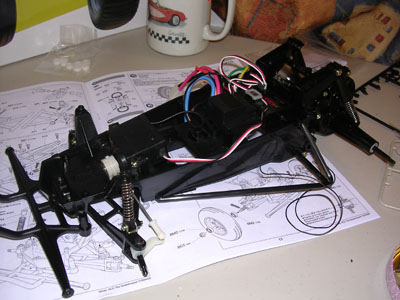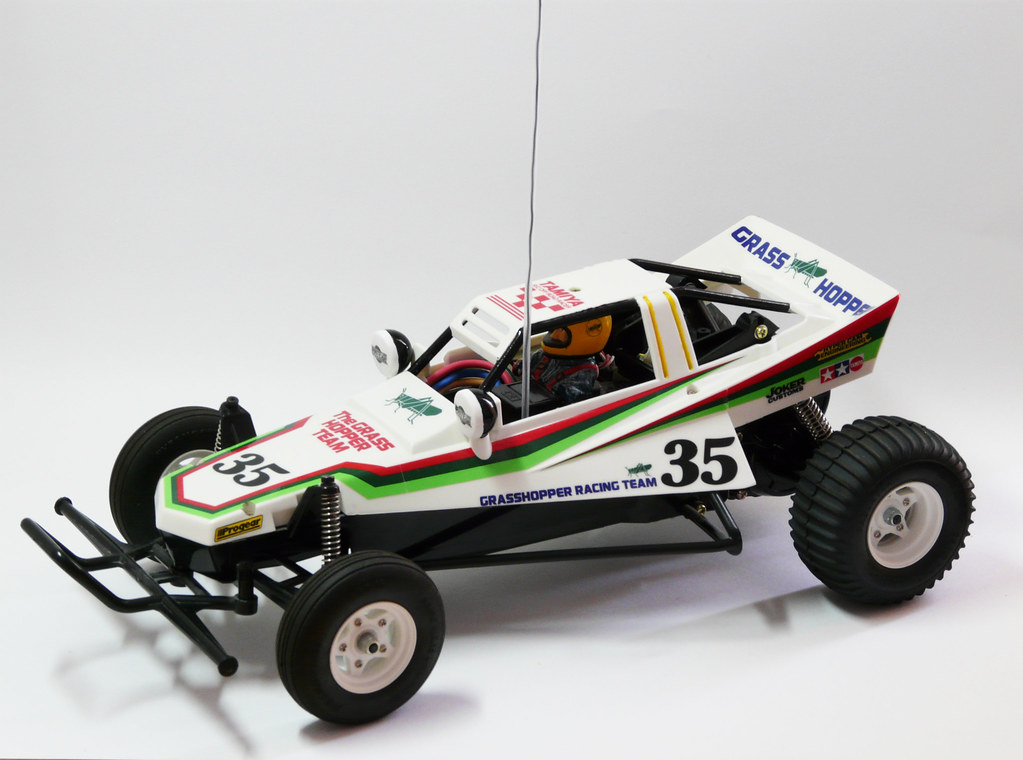
First up will be a build that I did a few years back in 2006. The kit was a "The Grasshopper" rerelease. The original release was in 1984. Many people enter into the RC world with something from Tamiya because of their well-known build quality, easy to understand and detailed instructions, and their ease of assembly. So this is nostalgic to many Tamiya collectors and even just plain RC enthusiasts because this was their first RC or one of the few choices they had when they purchased their first RC. Released a few months after the Grasshopper was the Hornet which had the same chassis, but had a lexan body instead of the styrene body found on the Grasshopper.
The original commercial for the Grasshopper can be seen on YouTube.
These pics were resized for forum posting and I couldn't find the original files for these, so these will have to do for now. I remember building this about a week before starting university haha!
First up is the NIB kit, I think this kit was only $100. It is a great deal because it includes an "Electronic Speed Control" which does exactly what it says, it controls the speed of the RC. Other electronics that are needed are the controller, receiver, steering servo, battery and charger. Of course you would need paint for the body as well. For this kit, I used Tamiya Pearl White (For Plastic).

Here are the contents inside the kit.

The first step is to build the rear axle. Since the chassis is the same as the one released in 1984, we have a solid axle in the rear. Current buggies mostly use independent suspension on both ends because it gives better performance. Another unique thing about the Grasshopper is the use of a 380 size motor. Generally, 10th scale RC's use at least a 540 size motor, 380 size is usually used in smaller scales such as 1/16 and 1/18. This makes the Grasshopper excellent for beginners because of the slower speeds and improved runtime. The solid axle looks like what you find on many RC toys. The difference would be the indestructable gears in these Tamiya axles. The gears are well known to be able to withstand insanely fast motors which can propel the little Grasshopper up to speeds of 30-40mph.

The chassis is a simple tub-style chassis. Everything you see in this picture is plastic. However, more ductile plastic(compared to the main chassis) are utilized on components such as the front bumper and side guards so they are more durable. The suspension shocks you see in the front are friction units. Their performance are poor, but they are cheap and require minimal maintenance.

The wheels are clamp beadlock style. Each wheel is composed of 3 pieces: the inner piece which goes inside the tire, and two outer piece which clamps onto the bead of the tire to secure it in place with 5 screws.


One aspect I really like about certain Tamiya RC's is the driver figure. The driver is present on most of the older Tamiya buggies because of the open cockpit design of the body. The figure is made with styrene molded in white and requires painting. Painting the driver is one of my favourite parts in building the kit. Instead of following boxart, I went with my own color scheme.

However, I am not too good at painting the eyes. The driver looks like he is in shock LOL

Driver's look during my driving

Last picture with the completed Grasshopper. This one is on display in my room currently. I cannot bring myself to bash it because of the work I put into the body. Since the body is made of styrene, it cannot take a beating. I have only ran it around inside the house, so it is still in mint condition.

Most updated picture of the Grasshopper (Click for large size)

Link to Tamiya's Grasshopper page
If you use a black marker to draw his upper eye lips maybe it will change the shocker look. Just my 2 cents. :)
ReplyDeleteThanks LEon, I will try it out and post the results!
ReplyDeleteCool touch-up to the RC Grasshopper. If I recall correctly. This used to be a grand prize in most of the Tamiya car race.
ReplyDelete